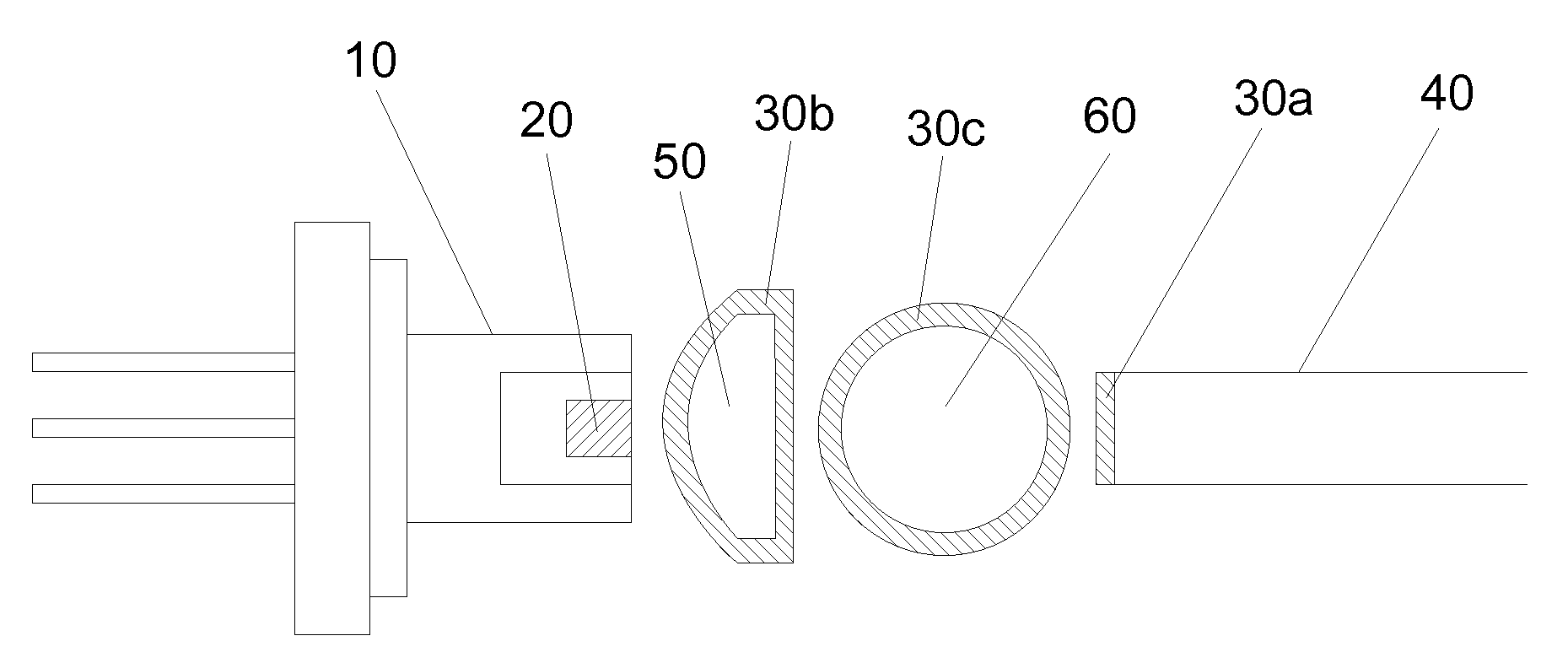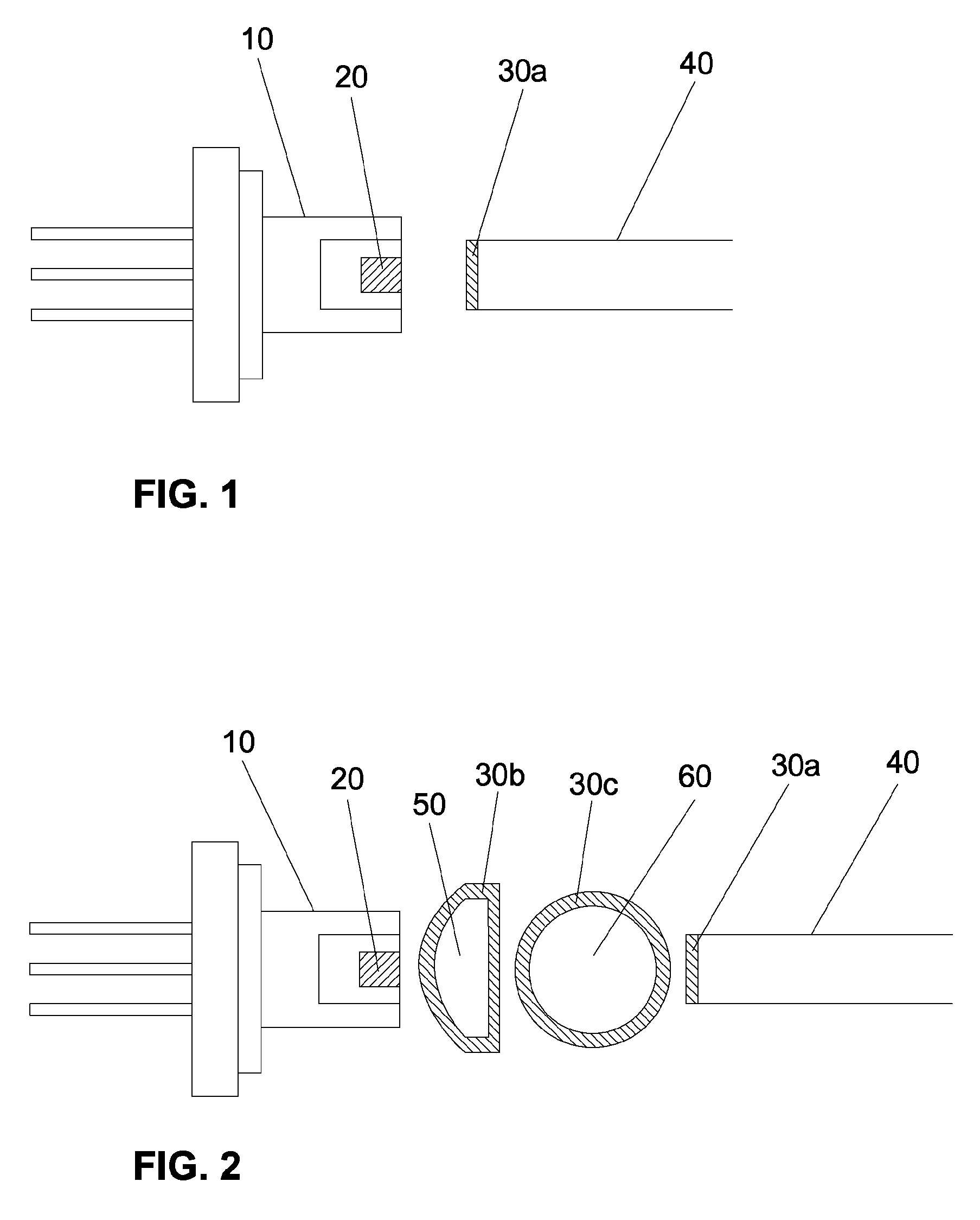Anti-reflective launch optics for laser to fiber coupling in a photoplethysmograpic device
a technology of anti-reflective launch and laser to fiber, applied in the field of photoplethysmography, can solve the problems of inability to place lasers in the sensor that is positioned in close proximity, direct on, and insufficient size of laser devices, so as to minimize back reflection, minimize the likelihood of adversely affecting the wavelength or intensity stability of light emitted, and maximize the effect of light availabl
- Summary
- Abstract
- Description
- Claims
- Application Information
AI Technical Summary
Benefits of technology
Problems solved by technology
Method used
Image
Examples
Embodiment Construction
[0022]One embodiment of a light launching portion of a photoplethysmographic device is shown in FIG. 1. An emitter housing 10 contains a light source, also called an emitter. The emitter is a laser 20 but it can be any one of a number different types of lasers. The emitter shown in this figure, by way of example only, is a diode laser. A few of the possible laser types include gas lasers, diode lasers, dye lasers, or vertical cavity surface emitting lasers (VCSEL), to name a few.
[0023]The light emitted by the laser 20 is directly coupled, or launched, into a light guide 40. That is, the light emitted by the laser 20 is directly incident on and injected-into the light guide 40. The light guide 40 can accept light that is incident on its entrance face, however there may be limits to the incidence angle on the entrance face at which light can propagate into the light guide. The limits to this angle of incidence may be quantified in part by the numerical aperture of the light guide. The...
PUM
 Login to View More
Login to View More Abstract
Description
Claims
Application Information
 Login to View More
Login to View More - R&D
- Intellectual Property
- Life Sciences
- Materials
- Tech Scout
- Unparalleled Data Quality
- Higher Quality Content
- 60% Fewer Hallucinations
Browse by: Latest US Patents, China's latest patents, Technical Efficacy Thesaurus, Application Domain, Technology Topic, Popular Technical Reports.
© 2025 PatSnap. All rights reserved.Legal|Privacy policy|Modern Slavery Act Transparency Statement|Sitemap|About US| Contact US: help@patsnap.com


